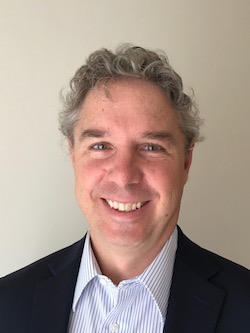Third Thursday – February 2024 – Doug Dunston
Balancing Structure and Autonomy for Optimal Team Performance
About Our Third Thursday Guest: Doug Dunston

Doug, our esteemed main speaker, brings a rich background in strategic processes and team motivation, drawing from his unique experience as an orchestral conductor to orchestrate effective meetings and strategies. Since 2022, he has been a strategic fellow, where he has applied his expertise to foster autonomy and optimal challenge within teams. He is deeply knowledgeable about self-determination theory, focusing on intrinsic motivation and how choice, competence, and relatedness can drive higher engagement and performance. Doug’s insightful perspective on motivating teams from within promises to be a highlight of our event.
TImetamp Overview
00:00 Exploring team motivation through self-determination theory.
03:54 Amotivation: Lacking purpose or understanding for actions.
06:32 Describe effective team behavior and motivation clues.
12:45 Competence, relatedness, autonomy are key motivational factors.
16:48 Prepare to complete a survey about teamwork.
21:21 Answer quickly; scoring takes longer. Indicate progress.
25:21 Graphical interpretation of student motivation survey results.
27:41 Trust, honesty, and purpose essential for teamwork.
35:12 Exploring meaningful choice within structured processes.
37:20 Lean management eliminates non-value activities, standardizes processes.
41:31 Structure reduces chaos and aids productivity.
Key Themes
- Trust and engagement with surveys.
- Disconnect in task perceptions.
- Autonomy in task completion.
- Social loafing in teams.
- Equity in task distribution.
- Lean management efficiency.
- Importance of structure in workplaces.
About the Conversation
Navigating the Intricacies of Motivation and Engagement in Team Dynamics
In a recent episode of Agile Strategy Lab’s Third Thursday series, host Mary-Marshall VanSant, along with guest expert Doug, addressed critical aspects of team dynamics, motivation, and structure in the workplace. This enlightening session provided valuable insights into fostering an environment where team members can thrive, ensuring both structure and autonomy are effectively balanced. Here, we’ll delve into the key themes discussed, offering a comprehensive overview of strategies to optimize team performance.
Understanding Team Motivation through Self-Determination Theory
Exploring the Four Categories of Motivation
Doug introduced the audience to the Self-Determination Theory by researchers Ryan and Deci, which categorizes motivation into four distinct types. These include:
- Amotivation: A lack of motivation where individuals see no relevance or purpose in their tasks.
- External Regulation: Motivation driven by external rewards or consequences.
- Identified Regulation: Individuals recognize the importance of a task even if it’s not inherently enjoyable.
- Intrinsic Motivation: Engagement in activities for the inherent satisfaction and enjoyment they provide.
Participants reflected on their experiences with high-performing teams, predominantly noting the presence of intrinsic motivation—showcasing the power of genuine engagement and interest in fostering team success.
Addressing Social Loafing and Task Distribution in Teams
Equity and Instrumentality in Task Assignment
David, a participant, highlighted the issue of social loafing within student teams, emphasizing the importance of equity and instrumentality in task assignments. Equitable task distribution ensures that all team members feel they are contributing fairly, while instrumental task assignment aligns roles with individual skills and strengths. By carefully balancing these elements, teams can elevate motivation, reduce friction, and enhance overall efficiency.
Balancing Structure within Project Methodologies
Providing Autonomy in Structured Frameworks
One of the pivotal questions raised during the discussion came from an unidentified participant who inquired how to offer autonomy within highly structured project methodologies like the waterfall model. Doug suggested small yet meaningful adjustments—such as altering meeting formats or communication processes—to provide team members with choices even within rigid frameworks. This approach helps maintain a sense of ownership and intrinsic motivation, crucial for long-term engagement.
Lean Management and Non-Value-Added Activities
Improving Efficiency through Lean Methodologies
Janice shared her experience with lean management, a methodology focused on eliminating non-value-added activities to boost efficiency. She underscored the necessity of understanding and buying into lean principles to prevent resistance from team members. For example, in customer service, standardizing task protocols can significantly enhance teamwork and customer satisfaction—demonstrating how structured systems can lead to better outcomes when appropriately implemented.
Enhancing Team Motivation: The Role of Autonomy, Competence, and Relatedness
Supporting Psychological Needs for Sustained Motivation
Doug emphasized the three fundamental psychological needs that support sustained motivation: autonomy, competence, and relatedness. Autonomy involves giving team members control over their tasks, competence ensures tasks are neither too easy nor excessively challenging, and relatedness fosters a sense of value and connection among team members. Meeting these needs is crucial for maintaining a motivation-driven environment.
Practical Application: Using the Situational Motivation Scale (SIMS)
Assessing and Enhancing Team Motivation
To provide participants with a practical tool, Doug introduced the Situational Motivation Scale (SIMS), a survey designed to gauge motivation levels in team activities. By assessing where their motivations fall—whether it’s amotivation, external regulation, identified regulation, or intrinsic motivation—teams can tailor their approaches to better support each member’s psychological needs. This proactive measure helps create a more engaging and satisfying work environment.
Structuring for Success: Liberating Structures
Harnessing the Power of Structured Systems
Doug’s concept of “liberating structures” showcases how well-implemented systems can enhance autonomy while reducing chaos and confusion. He highlighted the importance of participation and acceptance in structured environments to prevent workarounds and improve performance. For example, in call centers, while some employees may resist new systems, demonstrating the tangible benefits of these structures can lead to higher compliance and better overall outcomes.
Conclusion: Embracing Balance for Team Success
Reflecting on the Journey towards Optimal Team Performance
In closing, the session underscored the importance of balancing structure with autonomy to enhance team motivation and performance. By understanding and addressing the psychological needs of autonomy, competence, and relatedness and by applying practical tools like SIMS, teams can navigate the complexities of motivation and structure. This approach not only fosters a higher level of engagement and satisfaction but also paves the way for sustained success and growth.
As we look ahead, the next session on March 21 with Reagan Derfuss promises to explore another critical topic—food insecurity—continuing the journey of insightful discussions and valuable learning at Agile Strategy Lab.
